Wondering How to Convert RAW to JPEG?
Try the Movavi Converter!
- Lightning-fast conversion
- Batch processing of files – any number, any size
- No quality loss, even with 4K videos
- Easy editing and compression
How to do a RAW to JPEG conversion
People usually buy professional-grade cameras to get the best image quality possible. However, soon they find out that the best results come from saving images in RAW format, which come in different formats, depending on the camera manufacturer: CR2 (Canon), NEF (Nikon), ARW (Sony), and more. These RAW files retain the unprocessed information from the camera’s sensor, saving as much visual information as possible. Retaining this much information is important for ensuring optimum quality, but the downside is it makes the files pretty large. Additionally, not many photo editing programs provide good support for RAW image formats, which means that you may find you can’t open or edit these files on a computer.
So, for practical reasons, one of the best ways to deal with the aforementioned problems is to convert RAW files to a more convenient and flexible format like JPEG (JPG). This image format is more universal and is supported by almost every device, so you won’t have any trouble viewing or editing the files. Plus, JPEG files are much smaller, making them much more flexible for storage purposes, especially if you have a lot of images.
In the guide below, we cover RAW-to-JPEG conversion as well as the difference between these two formats.
How to use Movavi’s RAW-to-JPEG converter
To safely convert RAW to JPG without problems, you will need a good file conversion program. In this case, a great idea would be to try Movavi Video Converter. Despite being designed a video converter, the program easily converts between all popular image formats, including PNG, GIF, TIFF and other still image formats. And with the help of the batch conversion feature, you can convert your RAW photo library in the shortest time possible.
Download our RAW-to-JPG converter for Windows or Mac now and follow this easy step-by-step tutorial.
Step 1. Download and install RAW-to-JPG converter
Download Movavi Video Converter, open the downloaded file and follow the on-screen instructions to install the software.
Step 2. Add your files
Click the Add Media button, then Add Images and choose the RAW images you want to convert. You can add multiple pictures at the same time for batch conversion.
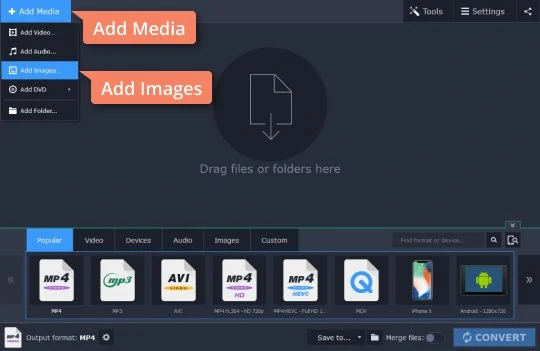
Step 3. Choose the output image format
To convert RAW images to JPG format, open the Images tab, choose JPG, and select the only preset available.
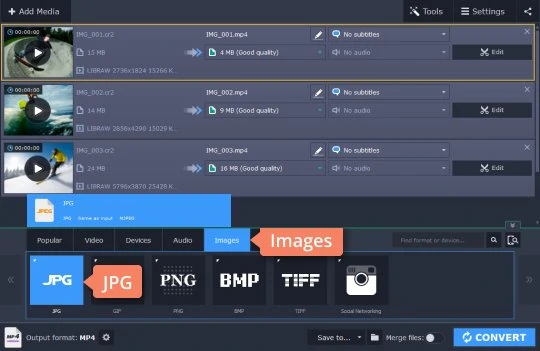
By default, the images will be saved in the original resolution, which is usually pretty large. So if you want to upload the converted images to the internet or your mobile phone, you might want to reduce the resolution. Click the Cogwheel button to customize the chosen preset. In the opened window set the frame size to Custom, and change the Width and Height values to what you need. Remember to сlick the link icon to toggle Scale proportionally off, otherwise you won’t be able to set different width and height values and your picture will be square. When all the parameters are set to your liking, click OK.
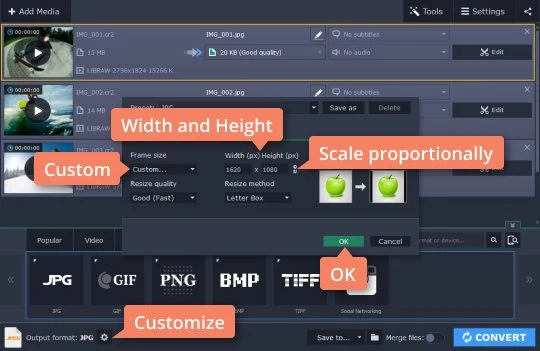
Step 4. Start converting the RAW-to-JPEG files
Click the Folder icon and specify the folder your JPG files will be saved to. Click Convert to start the process. After the conversion is complete, the folder containing your files will open automatically.
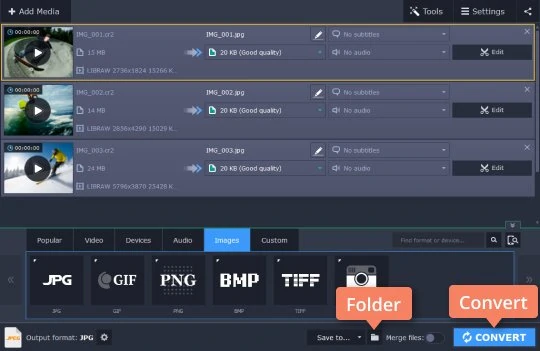
Now you know how to turn large RAW images into smaller and more usable JPG files. You won’t have any no problems viewing, editing or printing your photos. Movavi Video Converter is the easy way to convert your multimedia files on PC or Mac. Download it now and see what it can do for you!
Movavi Video Converter
The ideal way to get your media in the format you need!
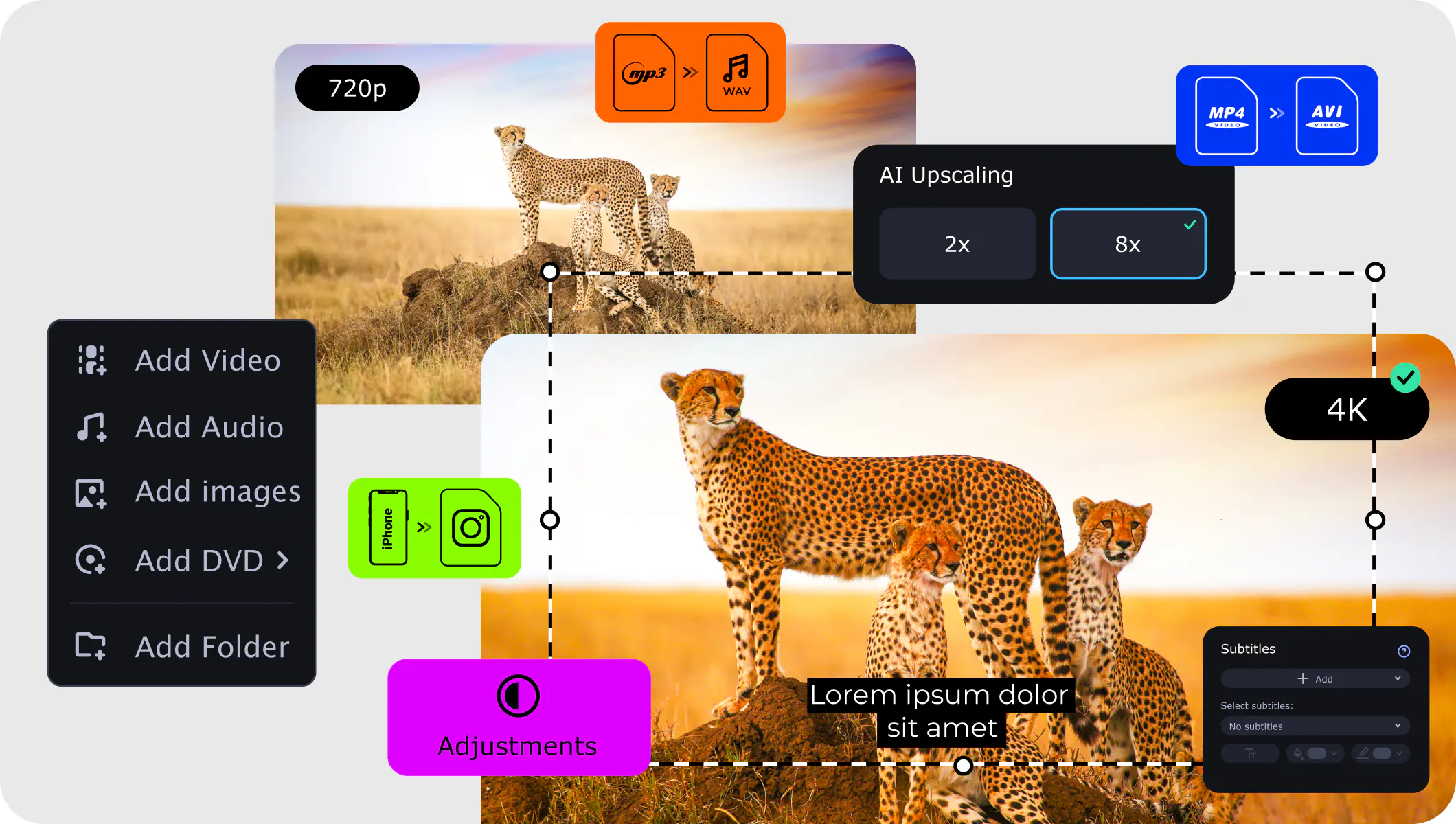
RAW vs. JPEG comparison
JPEG vs. RAW: which one to choose? Shooting in RAW has its benefits. RAW files contain unprocessed data from the camera sensor that makes it easy to repair even the most damaged photos. However, RAW files can be very large, usually 2-3 times bigger than JPEG.
If you want to save space on your hard drive and be able to open files on different devices, it is better to save your pictures in JPEG format. This format is also more widely used and is supported by almost all devices and websites.
Here’s what Movavi’s team does to provide you with verified information:
When selecting products to include in our reviews, we research both demand and popularity.
All the products covered in this article have been tested by our team.
When testing, we compare key characteristics, including supported input and output formats, quality loss when converting, and other significant features.
We study user reviews from popular review platforms and make use of this information when writing our product reviews.
We collect feedback from our users and analyze their opinions of Movavi software as well as products from other companies.

See other useful how-to guides
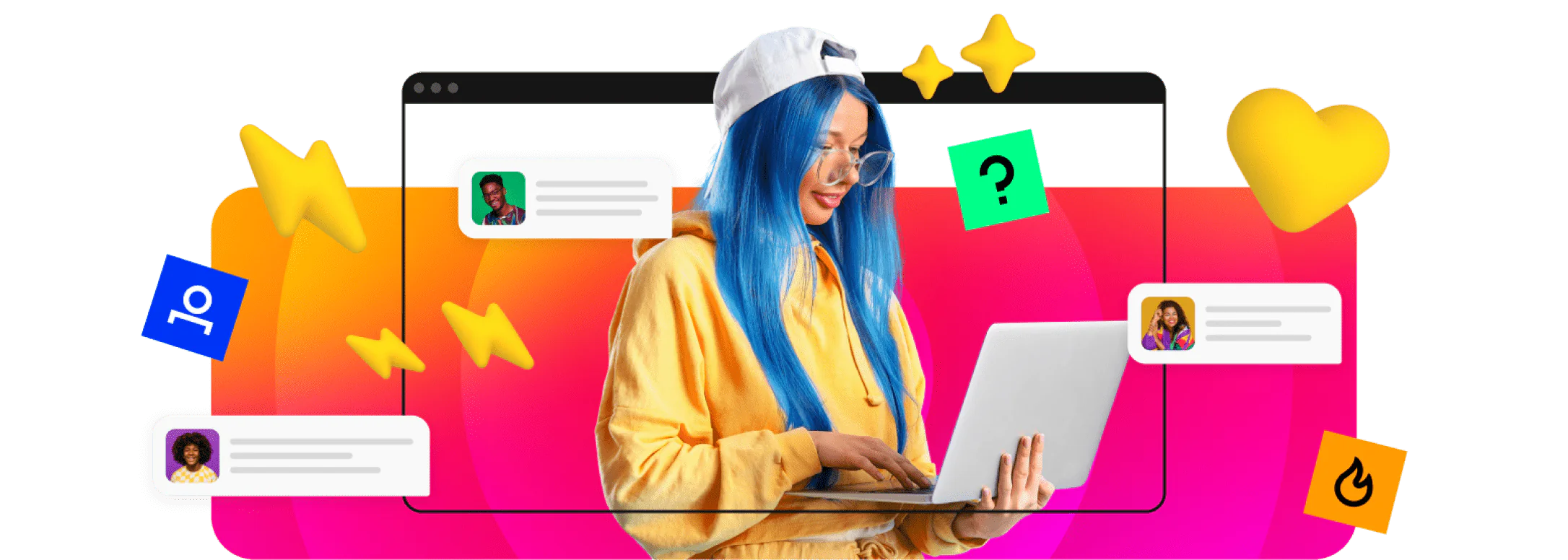
Have questions?
Join for how-to guides, speсial offers, and app tips!
1.5М+ users already subscribed to our newsletter